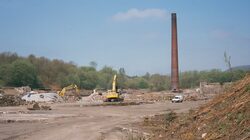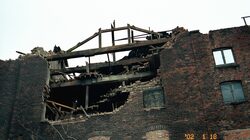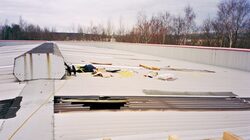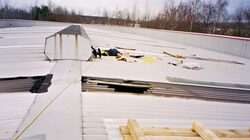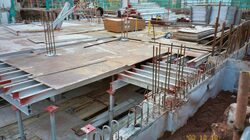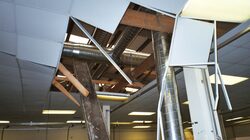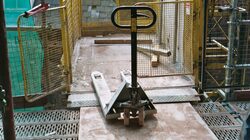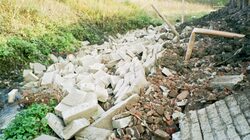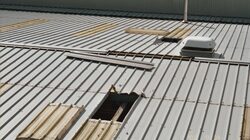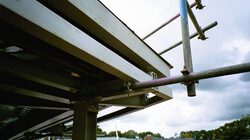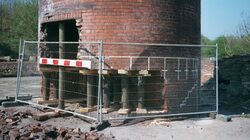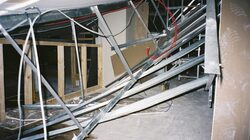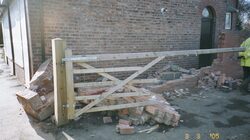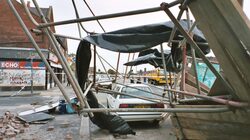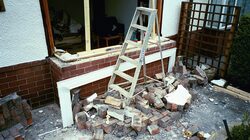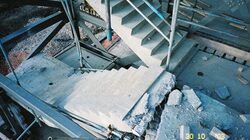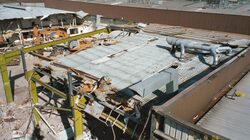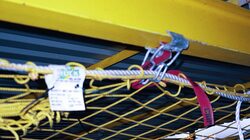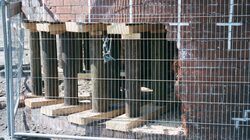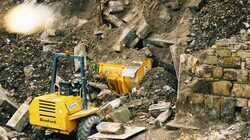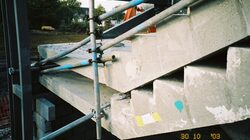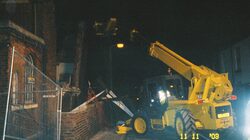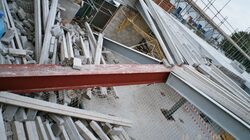News
7.4.16
EN 795: 2012 harmonised (with restrictions)
Official Journal of the European Union, 26.11.15
Commission Implementing Decision (EU) 2015/2181 (24 November 2015) publishes with restrictions, in the Official Journal of the European Union, standard EN 795: 2012, Personal fall protection equipment — Anchor devices, under Regulation (EU) No 1025/2012 of the European Parliament and of the Council.
A warning is issued in relation to:
-
type A (anchor devices with one or more stationary anchor points and with the need for structural anchors or fixing elements to fix to the structure);
-
type C (anchor devices employing horizontal flexible anchor lines); and
-
type D (anchor devices employing horizontal rigid anchor lines).
In respect of these types of equipment there shall be no presumption of conformity with the provisions of Directive 89/686/EEC because they are not considered to be “personal protective equipment” (PPE).
For detail, see: Link
26 March 2016 (c)
Suspension intolerance
Background
Over the years much has been said and written by those involved in mountaineering and personal fall protection (including industrial rope access) about “suspension intolerance” (often referred to still as “suspension trauma”).
Literature review
With much information floating around, and differing opinion being expressed, the Health and Safety Executive (HSE) set out to review any information that was available. It commissioned research that resulted in CRR 451/2002. This was a review that reported on existing literature, gave background information, raised issues for discussion and gave recommendations for further work. The recommendations stated, "If not already in place, rescue and first aid organizations to agree and publicize a strategy for the correct positioning of suspected suspension trauma casualties, particularly those who may be suffering from hypothermia and/or dehydration".
Advice
There was however, no agreed strategy for the correct positioning of a suspected casualty. The view developed that they should only be moved gradually until they were lying flat. Indeed, BS 7985: 2002 stated:
“… An injured person hanging in a harness awaiting rescue might be better off in a substantially horizontal position or with the knees elevated. During rescue, it could be advisable not to allow the casualty to become totally horizontal, but to be in a sat-up position, with the knees bent, to avoid a rapid return of venous blood to the heart. The eventual movement of the casualty to the horizontal position should perhaps be carried out only very slowly over an extended period of around 30 mins to 40 mins. …” (Annex D).
Medical opinion
Continued debate led to the commissioning, eventually, of a medically-based study by the Health and Safety Laboratory, RR708. The purpose of the review:
“… was to produce, “Simple, clear, agreed and authoritative recommendations for first aid for those who may be suffering from suspension trauma, using fall arrest systems in the workplace”. The use of the term “suspension trauma” might itself be questioned since whilst suspension is a necessary condition, trauma is not an accurate description of the possible ensuing medical circumstances. …”.
Completed in September 2008, it states:
"In 2002 the UK Health and Safety Executive (HSE) published a review entitled 'Harness Suspension: Review and Evaluation of Existing Information'. It was noted in this report that the rescue plan was an essential part of fall protection arrangements. The report quoted and summarised advice extracted from various papers concerning harness suspension and noted that, 'some of the advice appears to conflict'. Nevertheless, although this document was not intended to be a review of the medical advice for rescue from suspension it has been frequently cited in such a context and in support of measures that differ from standard UK first aid practice. Consequently, it was the recognition that authoritative guidance was needed for first responders, in the workplace setting, to any cases of a fall into harness suspension, which led to this project being undertaken".
It is noted, “… The literature reviewed fails to document cases occurring during industrial use of fall protection. …”.
A key recommendation was that, "No change should be made to the standard UK first aid guidance of ABC management, even if the subject of prior harness suspension."
BS 7985: 2009 was amended already to reflect this and it uses the term "suspension intolerance" (and not "suspension trauma"). BS 8437:2005 was similarly amended.
HSE Contract Research Report 451/2002, Harness suspension: review and evaluation of existing information, http://www.hse.gov.uk/research/crr_pdf/2002/crr02451.pdf
BS 7985:2002, Code of Practice for the use of rope access methods for industrial purposes (Replaced by BS 7985: 2009)
RR708, Evidence-based review of the current guidance on first aid measures for suspension trauma, http://www.hse.gov.uk/research/rrpdf/rr708.pdf (2009)
BS 8437:2005, Code of practice for selection, use and maintenance of personal fall protection systems and equipment for use in the workplace (Amended, August 2012)
24th November 2015 (c)

